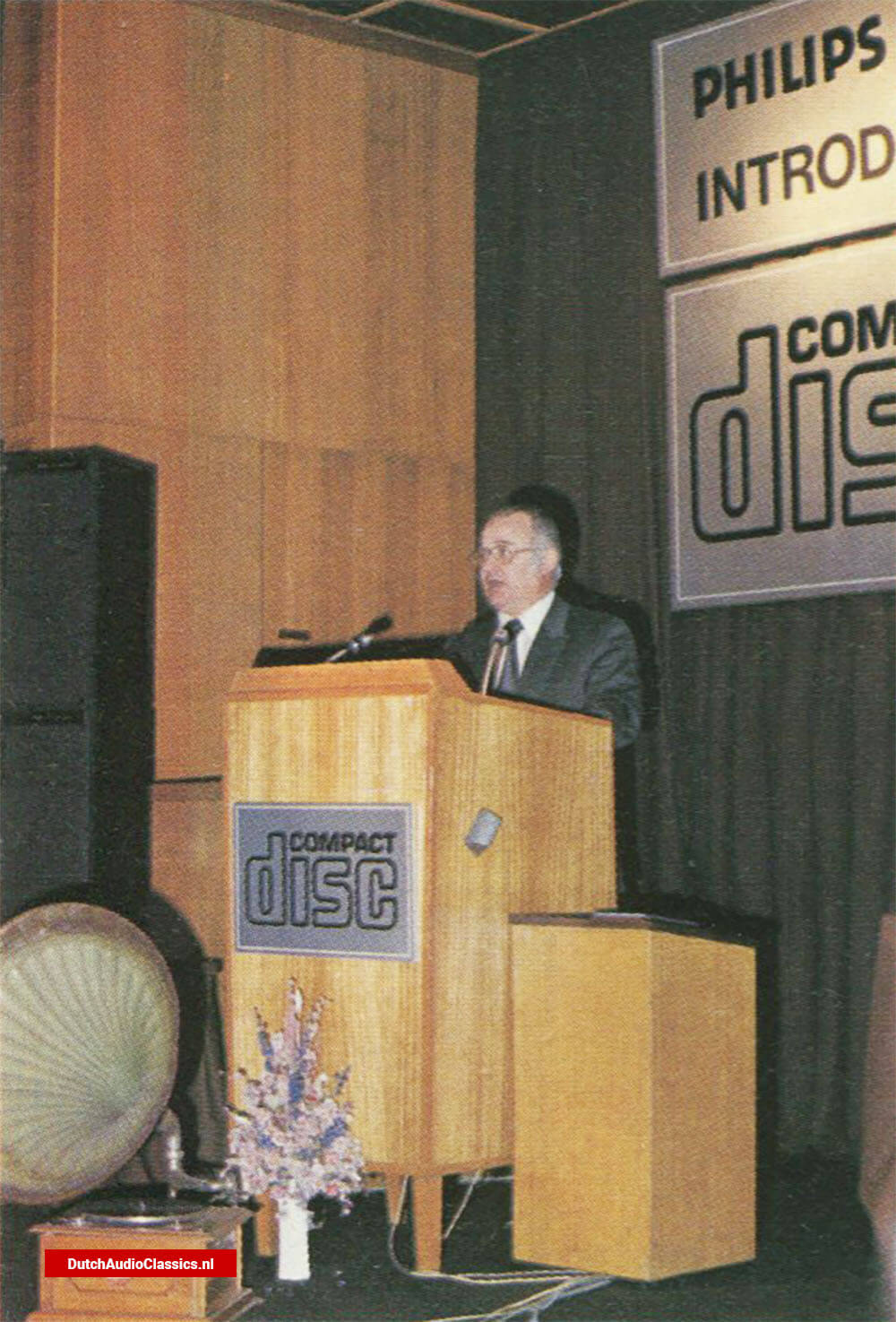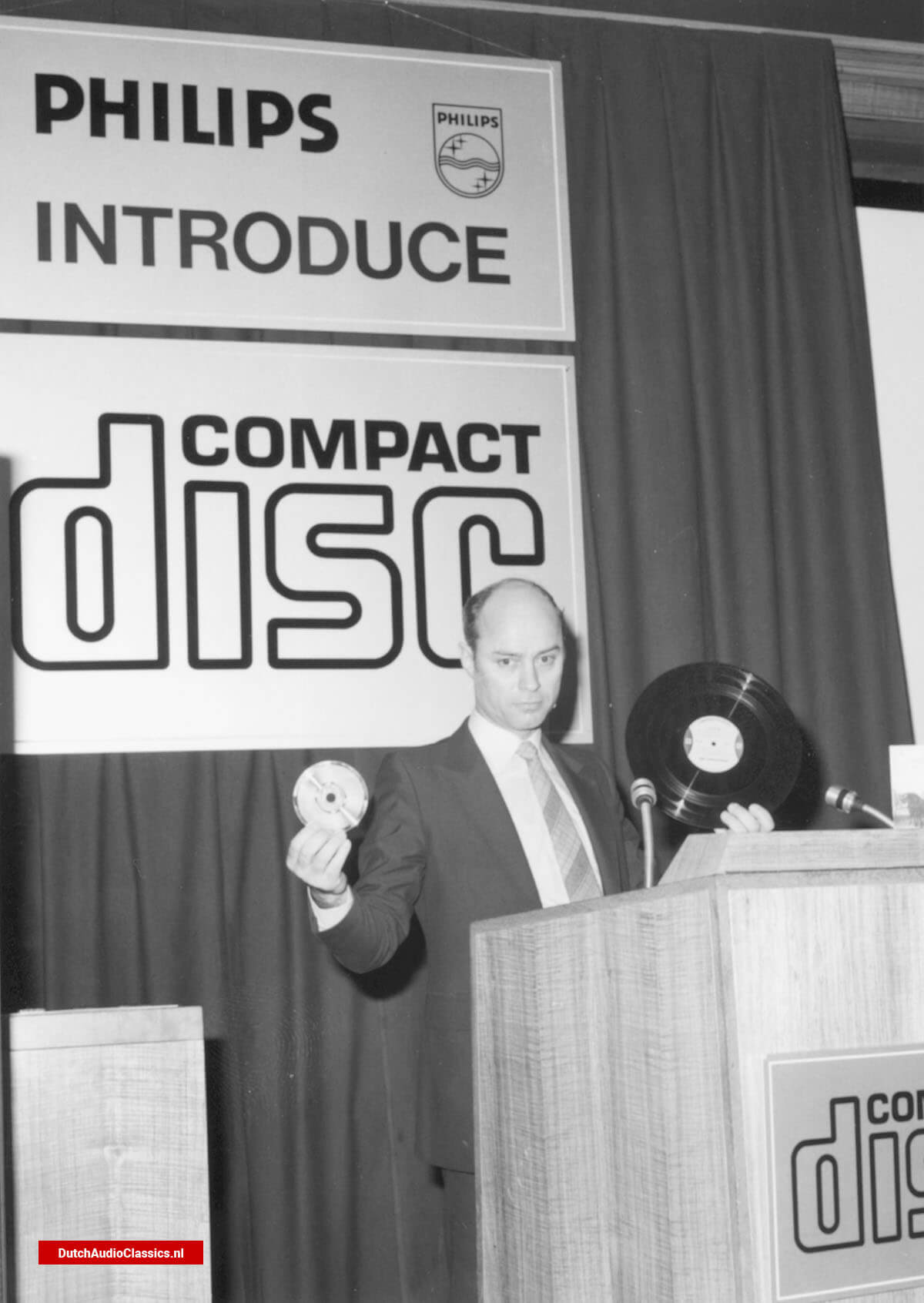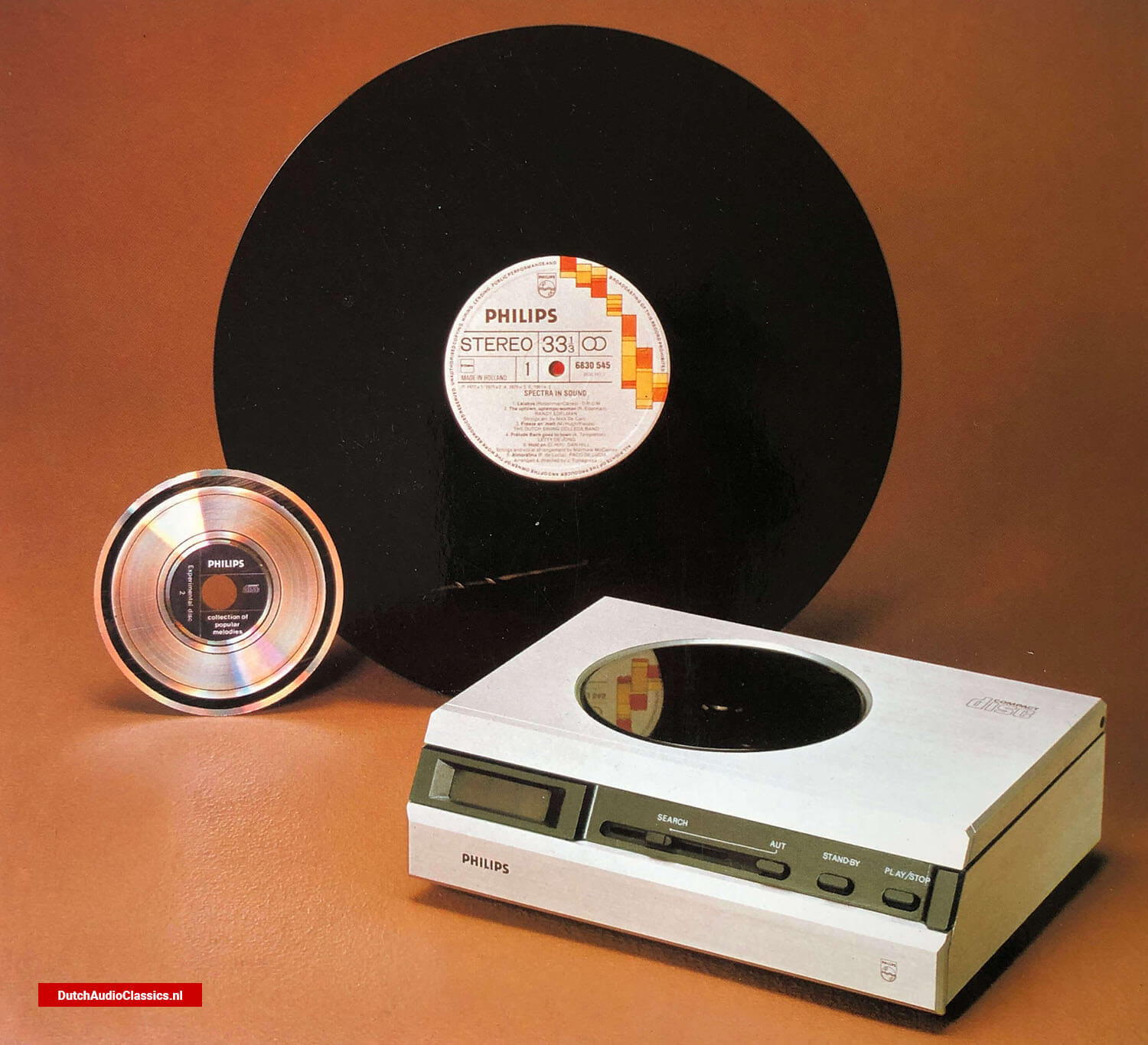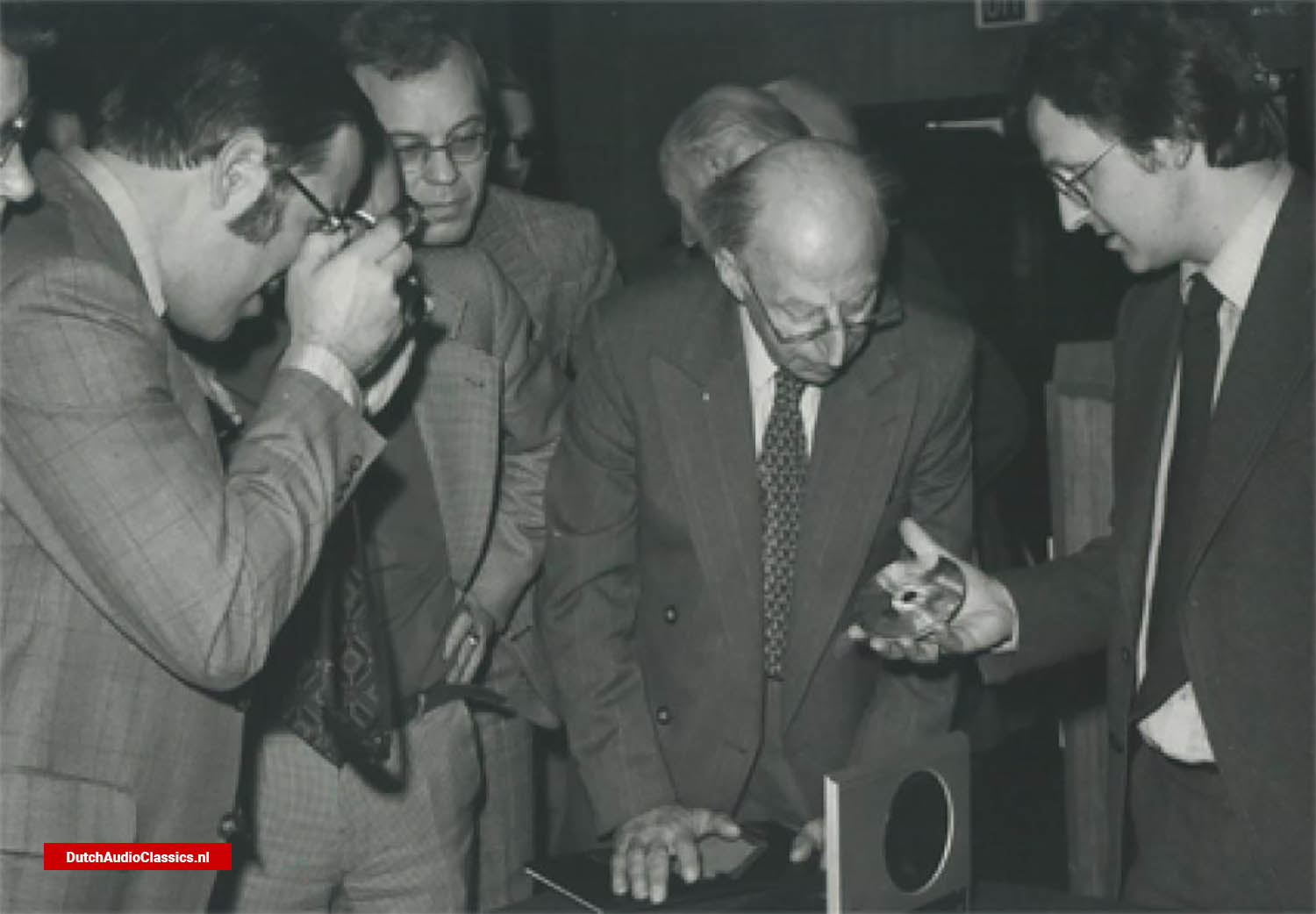On March 8, 1979, Philips, the Dutch consumer electronics company, unveiled a revolutionary new medium that would forever change the way we listen to music. The event took place in Eindhoven and was attended by press representatives from across Europe.
44 years ago, Philips introduced the Compact Disc System to the world March 8, 1979
- Timeline 1969-2009 - The development of the Philips Compact Disc System
- Worldpremiere - Philips introduces the Compact Disc - Eindhoven 8 March 1979
- Philips demonstrates the first compact disc player prototype
- Philips Pinkeltje
- The predecessor of the CD
- Interview with Joop Sinjou
- Perfecting the Compact Disc System - The six Philips/Sony meetings - 1979-1980
The Birth of the Compact Disc
Philips Manager Joop van Tilburg welcomed the press, highlighting the radical improvement in sound quality that the new system promised. The system that would bring about this change was the Compact Disc, or CD, a digital turntable developed by Philips engineers.
 Joop van Tilburg
Joop van Tilburg
 Joop Sinjou
Joop Sinjou
Joop Sinjou and Hans Mons were instrumental in the development of the CD in Eindhoven. The CD was a departure from traditional vinyl records as it used optical scanning instead of a diamond needle to read information from the record. The CD was scanned optically by a wafer-thin laser beam and its information was converted into electrical oscillations via the Pulse Code Modulation process. This process eliminated disturbances such as wow and flutter, rumbling, and other background noise, which were common with traditional records.
How the Compact Disc Works
The CD's tiny depressions, known as pits, were only 0.6 µm wide and 0.16 µm deep. This was equivalent to the size of a bacterium that could be viewed under a microscope. The CD's sealed layer meant that it was impervious to dust, scratches, and grease, and could be easily washed when dirty.
 Pits on a CD, 0.6 µm wide and 0.16 µm deep
Pits on a CD, 0.6 µm wide and 0.16 µm deep
From a technical standpoint, the CD offered a signal-to-noise ratio of 85 decibels, compared to the 60 decibels offered by traditional records. Joop Sinjou explained that this was the greatest advantage of the new system. Listening to music on a CD was an unparalleled experience, with pianissimo to fortissimo passages mastered with ease, even when listening to a large orchestra.
The CD's playing time of up to an hour was exceptional for a single-sided record, and four channels could be accommodated, although this was not planned at the time. The CD was priced similarly to a conventional long-playing record, ranging from 15 to 25 marks. The CD player was shaped like a cassette recorder, and its colorful, iridescent plate rotated at a variable speed.
The CD's frequency range extended from 20 Hertz to 20 Kilohertz, with distortions below 0.05 percent. The player cost between 500 and 700 marks, and its miniature laser had a service life of around ten years.
 The Philips Pinkeltje
The Philips Pinkeltje
Market Launch and Future of the CD
When asked about the market launch date, Philips managers were cautious, with many saying that the CD would be in shops by the mid-1980s. Manufacturers would need to commit to an international standard to keep records and players interchangeable. The press shops also needed to adapt. However, by 1982, the CD was available, and music lovers could store their record collection in a couple of shoeboxes with CD's superior quality.
Although the CD was technically mature, manufacturers had to commit themselves internationally to a common standard in order to keep records and players interchangeable. According to Philips, the usual long-playing records and turntables would still be manufactured "in the next ten years". Nevertheless, the weather could be made: CD would be available until 1982. The music would have a quality that audiophiles could only dream of for the time being.
 Hans Mons at age 34, shown on the right, shows a compact disc to the press, march 8, 1979.
Hans Mons at age 34, shown on the right, shows a compact disc to the press, march 8, 1979.
44 Years of the Compact Disc: A Revolutionary Turning Point in Music Technology
The introduction of the Compact Disc on March 8, 1979, was a turning point in the history of music technology. The impact of the CD on the music industry is still felt today, 44 years after its introduction. The CD revolutionized the way we listened to music, providing a digital platform that offered unparalleled sound quality, durability, and portability. The success of the CD paved the way for the development of other digital music formats and changed the music industry forever.